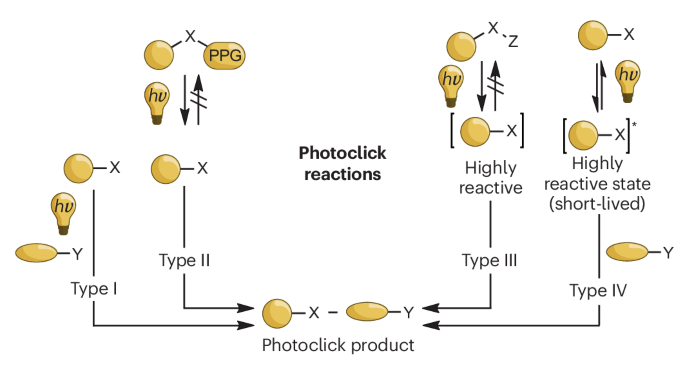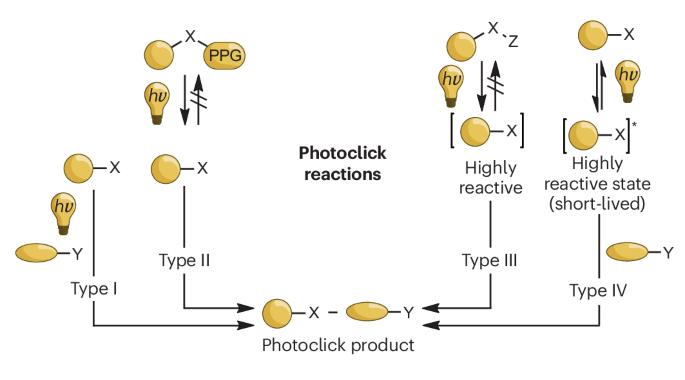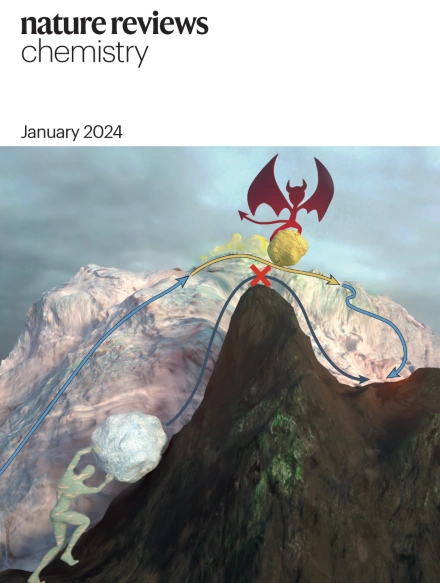Visible and near-infrared light-induced photoclick reactions
IF 38.1
1区 化学
Q1 CHEMISTRY, MULTIDISCIPLINARY
引用次数: 0
Abstract
Photoclick reactions combine the advantages offered by light-driven processes, that is, non-invasive and high spatiotemporal control, with classical click chemistry and have found applications ranging from surface functionalization, polymer conjugation, photocrosslinking, protein labelling and bioimaging. Despite these advances, most photoclick reactions typically require near-ultraviolet (UV) and mid-UV light to proceed. UV light can trigger undesirable responses, including cellular apoptosis, and therefore, visible and near-infrared light-induced photoclick reaction systems are highly desirable. Shifting to a longer wavelength can also reduce degradation of the photoclick reagents and products. Several strategies have been used to induce a bathochromic shift in the wavelength of irradiation-initiating photoclick reactions. For instance, the extension of the conjugated π-system, triplet–triplet energy transfer, multi-photon excitation, upconversion technology, photocatalytic and photoinitiation approaches, and designs involving photocages have all been used to achieve this goal. Current design strategies, recent advances and the outlook for long wavelength-driven photoclick reactions are presented. Photoclick reactions have found applications ranging from surface functionalization and polymer crosslinking to protein labelling and bioimaging, but they typically require near-UV and mid-UV light to proceed. This Review presents and discusses strategies and recent advances for long wavelength-driven photoclick reactions.


可见光和近红外线诱发的光点击反应。
光猝灭反应将光驱动过程所具有的无创、高时空控制等优势与经典的点击化学相结合,其应用范围包括表面功能化、聚合物共轭、光交联、蛋白质标记和生物成像。尽管取得了这些进步,但大多数光点击反应通常需要近紫外(UV)和中紫外光才能进行。紫外线会引发不良反应,包括细胞凋亡,因此,可见光和近红外线诱导的光致脆化反应系统非常理想。改用更长的波长还能减少光致脆化试剂和产物的降解。有几种方法可以诱导辐照引发的光致猝灭反应的波长发生浴色偏移。例如,共轭π系统的扩展、三重-三重能量转移、多光子激发、上转换技术、光催化和光引发方法,以及涉及光电笼的设计都被用来实现这一目标。本文介绍了当前的设计策略、最新进展以及长波长驱动光致脆化反应的前景。
本文章由计算机程序翻译,如有差异,请以英文原文为准。
求助全文
约1分钟内获得全文
求助全文
来源期刊

Nature reviews. Chemistry
Chemical Engineering-General Chemical Engineering
CiteScore
52.80
自引率
0.80%
发文量
88
期刊介绍:
Nature Reviews Chemistry is an online-only journal that publishes Reviews, Perspectives, and Comments on various disciplines within chemistry. The Reviews aim to offer balanced and objective analyses of selected topics, providing clear descriptions of relevant scientific literature. The content is designed to be accessible to recent graduates in any chemistry-related discipline while also offering insights for principal investigators and industry-based research scientists. Additionally, Reviews should provide the authors' perspectives on future directions and opinions regarding the major challenges faced by researchers in the field.
 求助内容:
求助内容: 应助结果提醒方式:
应助结果提醒方式:


